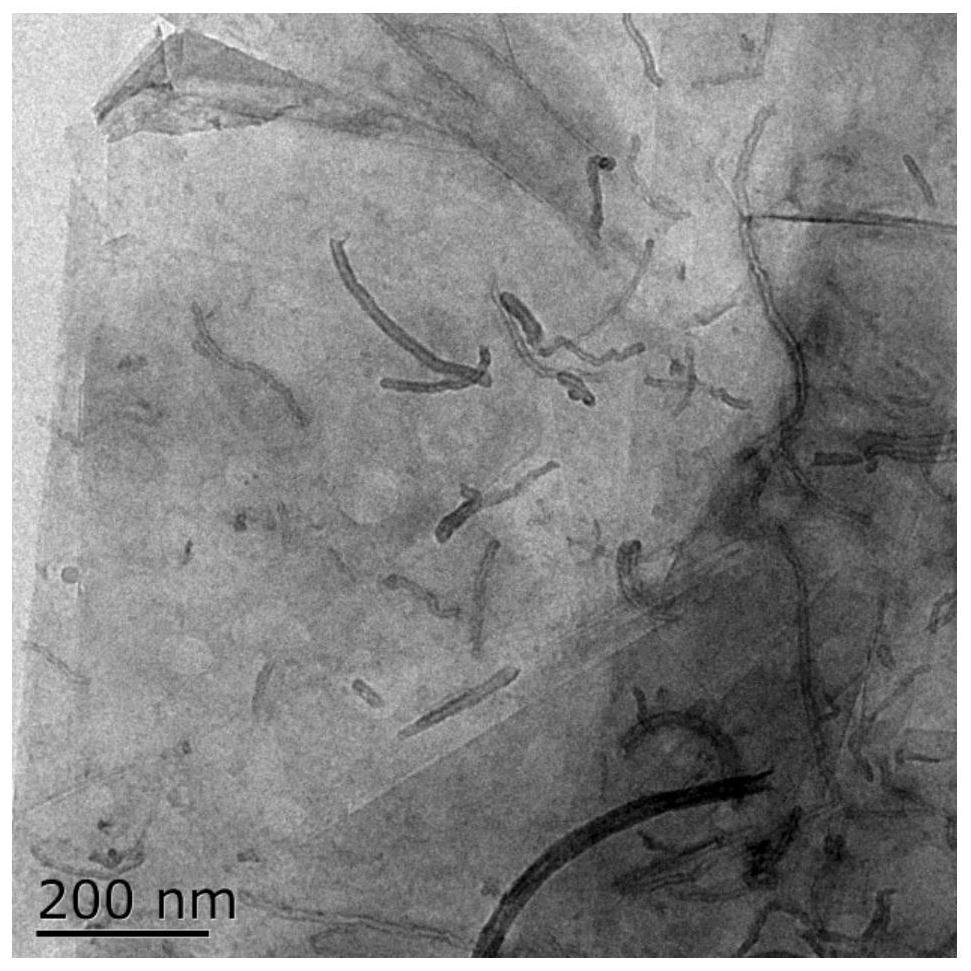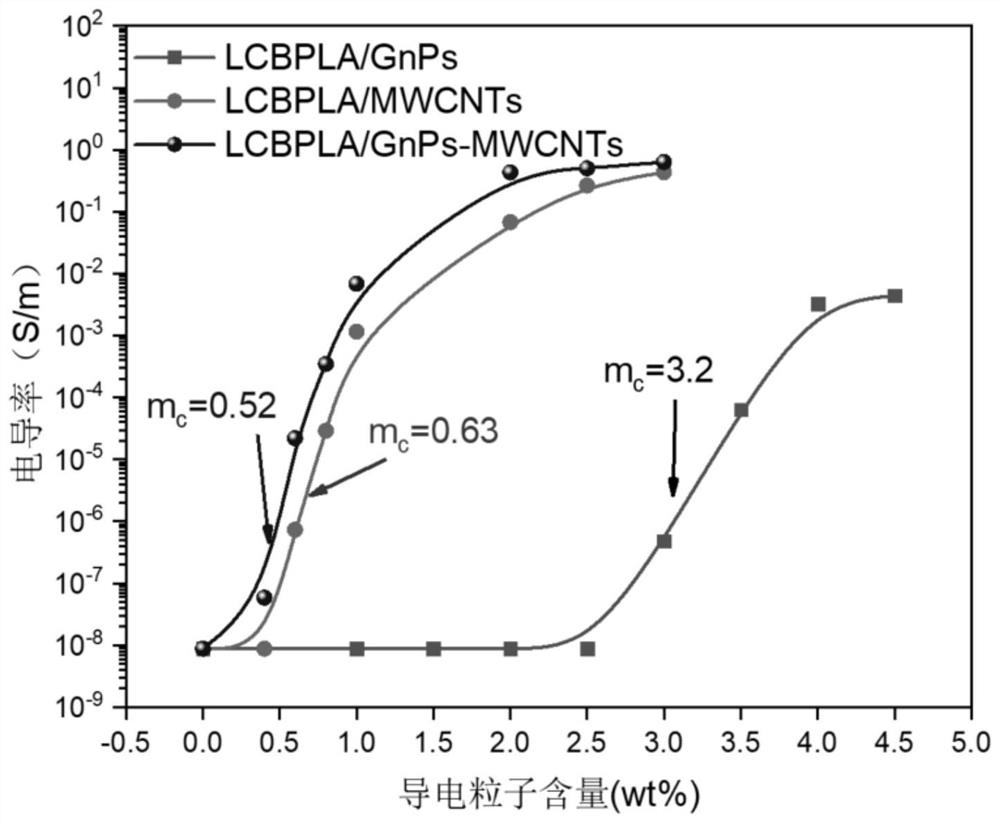High-toughness polymer-based temperature-sensitive composite material, and preparation method and application thereof
A technology of polymer materials and composite materials, which is applied in the field of high-toughness and high-sensitivity polymer-based temperature-sensitive composite materials and its preparation, can solve the problems of limiting the application prospects of conductive polymer composite materials and slow temperature response time, and achieve good results. Toughness, increased temperature response speed, and low percolation value
- Summary
- Abstract
- Description
- Claims
- Application Information
AI Technical Summary
Problems solved by technology
Method used
Image
Examples
Embodiment 1
[0033] 1) Dry the PLA particles in vacuum at 70°C for 24 hours; put 100 parts by weight of PLA into an internal mixer for blending, the blending time is 5 minutes, the speed is 50rpm, and the processing temperature is 180°C;
[0034] 2) In order to verify the processing modification, the polylactic acid was injected with HAAKE MiniJet Pro mini injection molding equipment: the injection pressure was 450bar, the melt temperature was 180°C, and the mold temperature was 100°C; the mechanical properties of the obtained samples were tested , and the results are shown in Table 1.
Embodiment 2
[0036] 1) Dry the PLA particles in vacuum at 70°C for 24 hours; put 100 parts by weight of PLA, 0.3 parts by weight of DCP and 0.2 parts by weight of PEGDA into an internal mixer for blending, the blending time is 5 minutes, and the speed is 50 rpm. The temperature is 180°C;
[0037] 2) In order to verify the processing modification, the polylactic acid was injected with HAAKE MiniJet Pro mini injection molding equipment: the injection pressure was 450bar, the melt temperature was 180°C, and the mold temperature was 100°C; the mechanical properties of the obtained samples were tested , and the results are shown in Table 1.
Embodiment 3
[0039] 1) Dry the PLA particles in vacuum at 70°C for 24 hours; put 100 parts by weight of PLA, 0.3 parts by weight of DCP and 0.4 parts by weight of PEGDA into an internal mixer for blending, the blending time is 5 minutes, and the speed is 50 rpm. The processing temperature is 180°C;
[0040]2) In order to verify the processing modification, the polylactic acid was injected with HAAKE MiniJet Pro mini injection molding equipment: the injection pressure was 450bar, the melt temperature was 180°C, and the mold temperature was 100°C; the mechanical properties of the obtained samples were tested , and the results are shown in Table 1.
PUM
 Login to View More
Login to View More Abstract
Description
Claims
Application Information
 Login to View More
Login to View More - R&D Engineer
- R&D Manager
- IP Professional
- Industry Leading Data Capabilities
- Powerful AI technology
- Patent DNA Extraction
Browse by: Latest US Patents, China's latest patents, Technical Efficacy Thesaurus, Application Domain, Technology Topic, Popular Technical Reports.
© 2024 PatSnap. All rights reserved.Legal|Privacy policy|Modern Slavery Act Transparency Statement|Sitemap|About US| Contact US: help@patsnap.com










